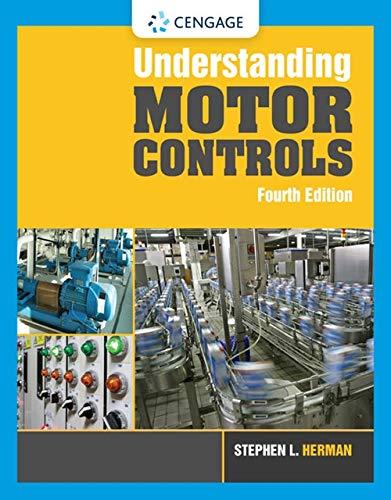
Concept explainers
Name the three major assemblies that make up a disc brake.
The three major assemblies used to make up a disc brake.
Answer to Problem 1SA
The three major assemblies are hub and rotor assembly, a caliper assembly, and the brake pads assembly.
Explanation of Solution
The disc brakes are comprised of three assemblies which are hub and rotor assembly, a caliper assembly, and brake pads assembly. The hub and rotor assembly is divided into two parts i.e. hub and rotor in which hub is the part in which wheel is fitted and may carry wheel bearings also. The rotor is the part which is generally made up with cast iron and is machined in a way that it provides a friction surface for the brake pads.
The caliper assembly is the one which is fitted to convert the hydraulic pressure to the mechanical force and inspects for the lining wear by the hole which is present on top of it. Further, a caliper has a capacity of containing up to six cylinders and pistons that helps in providing same level of pressure distribution.
The brake pad assembly is made up of metal having linings which are either riveted or bonded to them. It helps in straddling the rotor due to its position on each side of calipers. The linings on pads are semi-metallic in nature.
Conclusion:
Thus, the three assemblies which are used in making disc brakes are hub and rotor assembly, a caliper assembly, and the brake pads assembly.
Want to see more full solutions like this?
Chapter 52 Solutions
Automotive Technology
- please find Ix and Iy in mm4, the circles are all hollow and identicalarrow_forwardS.4. Yandaki şekilde AB çubuğu pirinç ve CD çubuğu alüminyumdur. Sıcaklık 20°C iken iki çubuk arasında 0,5 mm boşluk bulunmaktadır. a) Sıcaklık 95°C'ye yükseldiğinde çubuklardaki normal gerilmeleri, b) Bu durumda AB ve CD çubuklarındaki deformasyonu bulunuz. AB çubuğu için: E 105 GPa, a = 20x 10 1/°C CD çubuğu için: E-70 GPa, a 23,6x 106 1/°C 0.5 300 250 mm Alüminyum Çap 50 mm Çap 75 mmarrow_forwardRecall the head loss equation developed in class for a sudden expansion (See section 7.7 in your textbook). h₁= (V1-V2)² 2g Show all the steps in going from this equation to equation 3 for the minor loss coefficient, K, above.arrow_forward
- Just do Questions 7, 9, 11. Here are notes attached for reference. I prefer handwritten solutions. ONLY UPLOAD A SOLUTION IF YOU ARE SURE ABOUT THE ANSWER PLEASE. (If you have once answered this question don't answer it again I am looking for a difference solution)arrow_forwardThis is a tilt and rotation question. Here are notes attached for reference. I prefer handwritten solutions. ONLY UPLOAD A SOLUTION IF YOU ARE SURE ABOUT THE ANSWER PLEASE. I prefer handwritten solutions.arrow_forwardHomework#7arrow_forwardHomework#7arrow_forwardQ3. Consider an inlet flow for an engine with a supersonic inlet Mach number as shown in Figure. below, calculate the total pressure loss between point 1 and 3 if the flow passes first an oblique shock wave and then a reflected shock wave. (30 pts) Моо M∞ = 2.0 && = 30°arrow_forwardJust do Questions 7, 9, 11. Here are notes attached for reference. I prefer handwritten solutions. ONLY UPLOAD A SOLUTION IF YOU ARE SURE ABOUT THE ANSWER PLEASE. (If you have once answered this question don't answer it again)arrow_forwardarrow_back_iosSEE MORE QUESTIONSarrow_forward_iosRecommended textbooks for you
 Automotive Technology: A Systems Approach (MindTa...Mechanical EngineeringISBN:9781133612315Author:Jack Erjavec, Rob ThompsonPublisher:Cengage Learning
Automotive Technology: A Systems Approach (MindTa...Mechanical EngineeringISBN:9781133612315Author:Jack Erjavec, Rob ThompsonPublisher:Cengage Learning Understanding Motor ControlsMechanical EngineeringISBN:9781337798686Author:Stephen L. HermanPublisher:Delmar Cengage Learning
Understanding Motor ControlsMechanical EngineeringISBN:9781337798686Author:Stephen L. HermanPublisher:Delmar Cengage Learning
 Automotive Technology: A Systems Approach (MindTa...Mechanical EngineeringISBN:9781133612315Author:Jack Erjavec, Rob ThompsonPublisher:Cengage Learning
Automotive Technology: A Systems Approach (MindTa...Mechanical EngineeringISBN:9781133612315Author:Jack Erjavec, Rob ThompsonPublisher:Cengage Learning Understanding Motor ControlsMechanical EngineeringISBN:9781337798686Author:Stephen L. HermanPublisher:Delmar Cengage Learning
Understanding Motor ControlsMechanical EngineeringISBN:9781337798686Author:Stephen L. HermanPublisher:Delmar Cengage Learning